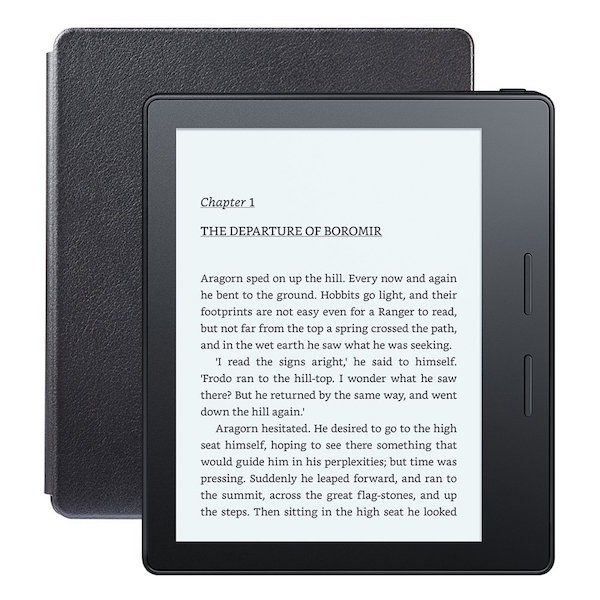
It's worth noting that the integrated lighting scheme now features 12 LEDs instead of the 10 found on the original Oasis. The text on the screen was sharp and had excellent contrast. In my limited time with the device, I found it comfortable to hold - it's well balanced - and the touchscreen is quite responsive. You can either turn pages using the physical page turn buttons - you can hold the device in your left or right hand - or tap the screen.

Amazon says the display's cover glass is the strongest to date, and the new dual-core 1GHz processor (with 512MB of RAM) is the zippiest too, giving you slightly faster page turns. The new Oasis tapers down to 3.4mm at its thinnest point and weighs in at 194 grams (6.8 ounces) - 10 grams lighter than the Paperwhite, which has a 6-inch display. I'd only consider the Oasis if you're a) a traveler who doesn't want to worry about having to charge yet another thing, b) a frequent (as in daily) reader who spends hours consuming books and magazines, or c) 💸 have cash to spare 💸.Watch this: Big-screen Kindle Oasis costs less, does more The Voyage is a good luxury pick, but I think the new Paperwhite is a decent e-reader that does its job very well. The Kindle Voyage ($200) includes a sensor that changes the light brightness automatically and invisible buttons that let you press the page without lifting your finger.Īmazon also released a modern, fresh-looking software update available for almost all Kindles that will make your old e-reader feel new again.īoth of these e-readers are great. It's Amazon's most expensive Kindle in a long, long time.Īmazon recently upgraded the display of its front-lit Kindle Paperwhite ($119) to the same resolution as the Voyage and Oasis: 300 ppi, which makes a huge difference when reading for long periods of time. The new Kindle Oasis is $290 for the Wi-Fi only version and $359 with Wi-Fi + 3G.


 0 kommentar(er)
0 kommentar(er)
